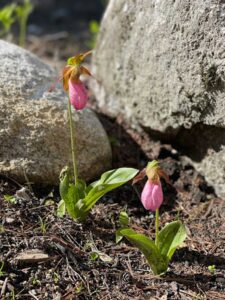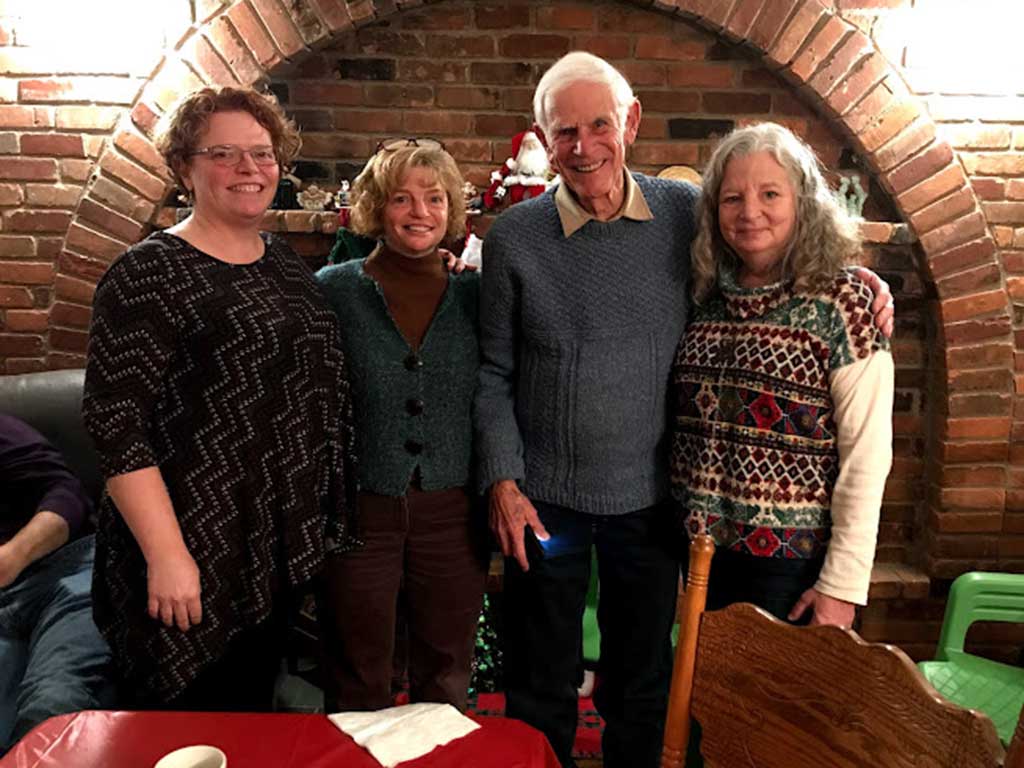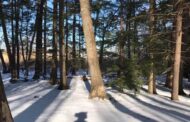By Nancy Dorrans
You can travel far away for an adventure to distant lands, or an adventure can be as close as a discovery in your own backyard or wooded lot.
Spring has me looking closer within and at the dirt and mud under my feet. I am hungry. Hungry for sunshine, hungry to get out into the garden, hungry for my winter sowing native seedlings to sprout. Hungry for an understanding of how plants and animals can be teachers. And hungry for more time outside.

Lady Slippers on My Wooded Lot
Last May I wrote about getting “Back to Nature with native plants and a wooded lot.” Buying a wooded lot in Waltham, Maine, two years ago this month, was “all very spontaneous, but I had to follow the signs. First, there was a lady slipper blooming next to the for-sale sign (one sign). Second, this lot had some DEP restrictions… because of the adjacent vernal pool (another sign) …”
That lady slipper was on the clearing that would soon become my driveway. Later that summer I was camping with friends at Lamoine State Park when I received a call from Michigan. My Aunt Gail had died. I had known her my whole life and a flood of memories enveloped me. Unfortunately, I couldn’t get to her memorial and was sad. I was going to miss her and all the shared memories.
She was still on my mind when I went back up to my lot to move the lady slipper out of harm’s way and the new driveway. The bloom was long gone, but the leaves and stem were still there.
I was told it wasn’t possible to move them, that it never works. “Lady slippers do not like to be moved!”

As I was carefully digging it up, I noticed another slipper nearby. Thinking about my aunt, I moved the slippers together to a rock under the hemlock tree. I named them Aunt Gail’s lady slippers and prayed that they would survive.
Garden Support
On my way to Waltham last spring, I happened upon Fernwood Nursery in Montville. It was here that I met Rick Sawyer and his wife Denise. Rick showed me around the variety of native and woodland plants they had for sale and told me to take a walk along the path towards the back of the garden. I was mesmerized by the beauty.
Denise greeted me with a welcoming calm. She told me the garden had held her up and supported her through the pandemic. The plants were not just plants to her… they were her counsel and teachers.
I told her about how I had transplanted Aunt Gail’s lady slippers and I prayed they would survive.
She said, “Of course they will, because you planted them with intention!” I cried. We chatted a long time and she recommended I read the book “Braiding Sweetgrass” by Robin Wall Kimmerer.
Three Sisters
So now I am reading and listening to this book and learning about “Indigenous Wisdom, Scientific Knowledge, and the Teachings of Plants.” I’m going to plant the “Three Sisters.” Three seeds: one corn, one bean, and one squash. Planted together, “these three plants feed the people, feed the land, and feed our imaginations, telling us how we might live…”
I am the middle sister of three sisters. My oldest sister lives next to my almost ninety-year-old father in East Tennessee. She is “clearly in charge… upright and efficient.” She is the corn that comes first.
I am a bean and come second. I am flexible, adaptable, and wind my way about searching for some support.
Now I’m remembering a rhyme my mother made up years ago about the two of us… “Susan Ann is a Can. Nancy Jean is a Bean, and together they make a can of beans.” Ha! Irony.
My younger sister came eight years later. She, like the squash seed, had to find her own way and write her own rhyme.
Kimmerer writes, “You can tell they are sisters: one twines around the other… while the sweet baby sister lolls at their feet, close but not too close…”

I have traveled far… and yet I have so much more to learn about plants and planting and our “reciprocal relationship with the rest of the living world.”
Hopefully by the time you read this, the warmth of our spring will have arrived and it is time for us to go outside and dig, breathe, and plant something with intention!





